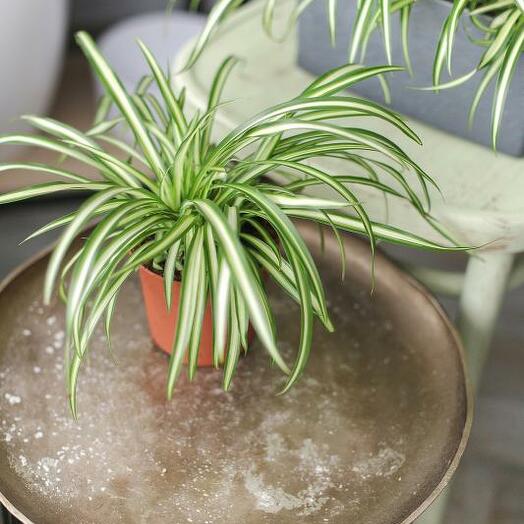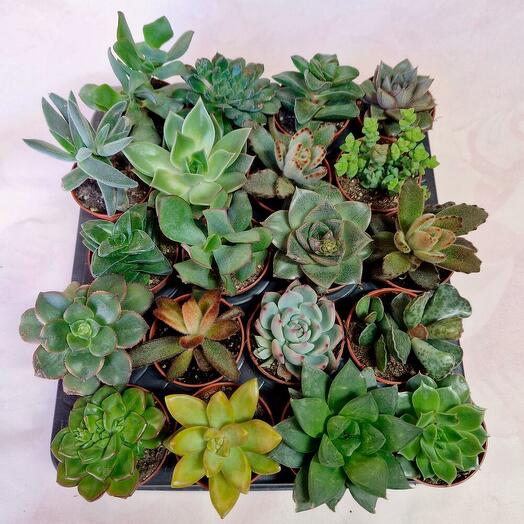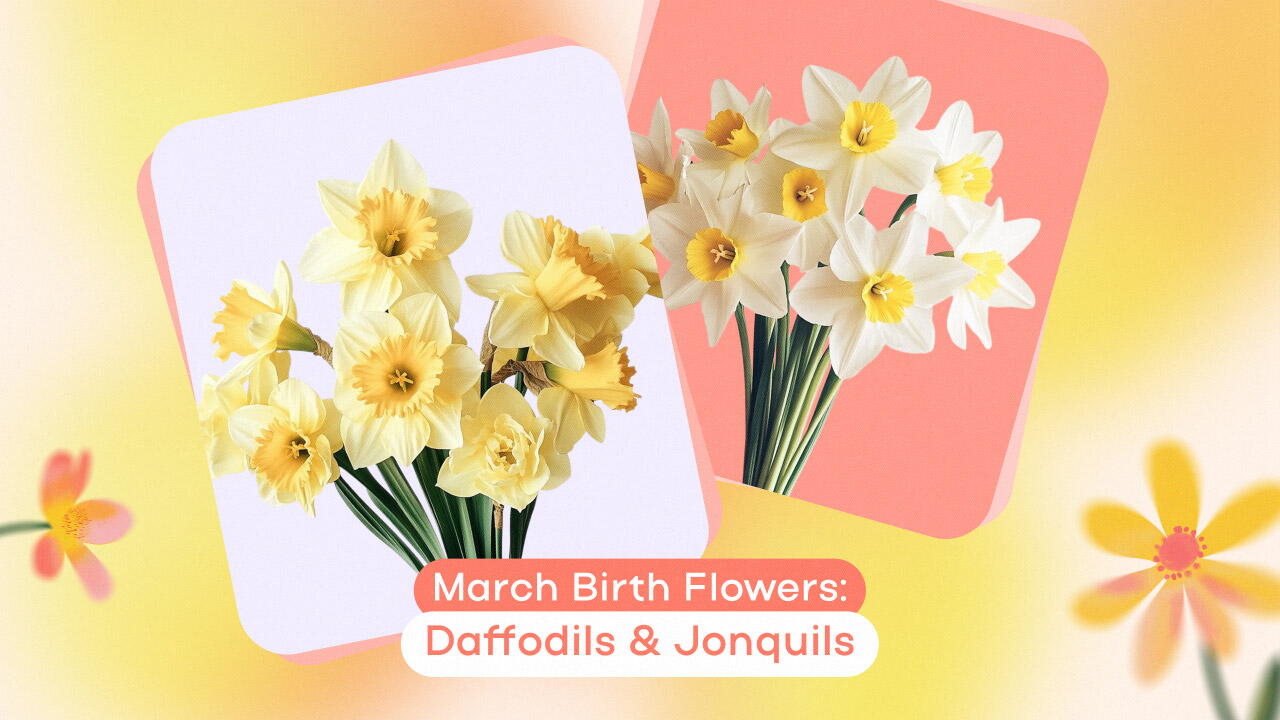
Vibrant colours, sweet aromas, and a myriad of shapes are the undeniably marvellous features of live flowers. Despite their seemingly harmless nature, certain floral varieties are a hazard for house cats. If you or your friends own one, you must know how much of a routine it is to read up on poisonous flowers before ordering flower delivery in London. To save everyone the hassle of browsing through hundreds of popular options, we’ve compiled a comprehensive guide for the owners of adorable furry companions – let’s learn what flowers are poisonous to cats!
How Can I Keep My Cat Away From Dangerous Plants and Flowers?
Realistically, there’s no way to avoid houseplants, poisonous to cats; just consider a surprise bouquet or a heartfelt gift from a dear friend. Nonetheless, for our beloved companions’ safety, it’s essential to prevent the consumption of dangerous flowers. So, the most reliable solution is to store any greenery in a separate room or create a difficult-to-reach area, such as high plant holders. Alternatively, consider deterrents – for example, citrus spray or double-sided tape – which most cats instinctively avoid.

What Parts of Flowers and Plants Are Most Poisonous
Overall, it's the buds and leaves that are most likely to have the highest toxin concentration. In certain cases, flower pollen might also cause an allergic reaction. In this regard, remove any sap or berries if your indoor plants produce them.

Common Flowers That Are Poisonous to Cats
Among flowers toxic for cats, the most highly recognised ones are certainly lilies and tulips, given the array of their harmful effects. However, innumerable other specimens can be hazardous too. Take a look at our infographics with household flowers that are poisonous for cats:
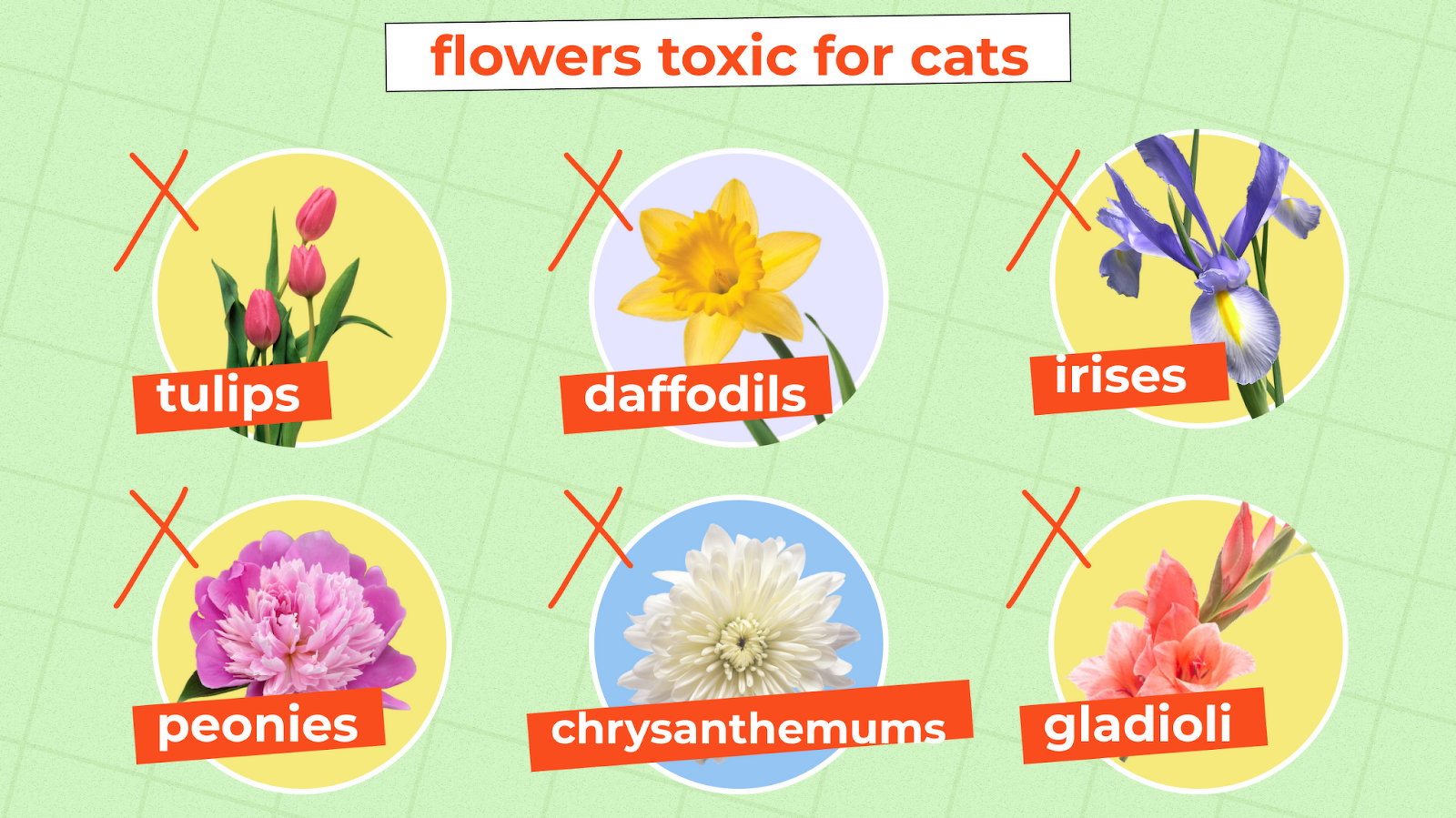
Tulips
Despite their lovely looks, they produce tulipalin A, which is extremely poisonous for any domestic cats.
Daffodils
As stunning as they are, daffodils contain lycorine, a substance known for causing a high number of intoxication symptoms.
Orchids
Thankfully, they are hypoallergenic, so there’s no need to worry if your cat nibbles on them.
Peonies
Sadly, peonies contain paeonol, which leads to vomiting and might even cause depression in cats.
Gladioli
Gladioli are full of glycosides, responsible for regurgitation, diarrhoea, and occasional tremors.
Ferns
Although ferns are not considered highly toxic, they can still irritate the bowel when swallowed in large amounts.
Irises
These flowers produce iridin, which provokes drooling, respiratory difficulties, and often lethargy in cats.

Amaryllises
A part of the lily family, amaryllises are extremely harmful, frequently becoming the reason behind severe gastrointestinal issues, kidney problems, and death.
Azaleas
An entirely different species from lilies, azaleas can nevertheless account for extreme weakness, problems with bowel movements, and organ failure.
Cyclamens
The flowers produce terpenoid saponins, which might lead to vomiting, loose stool, and lethal outcomes.
Stocks
Stocks are entirely safe, meaning it’s absolutely fine to grow them in a cat household.
Rhododendrons
Given that rhododendrons produce grayanotoxins, responsible for regurgitation, intoxication, and walking issues, keep your curious pets away.
Dianthuses
The safest flowers for felines, dianthuses are both easy to care for and harmless.
Fuchsias
Another variety posing no threat to most pets, fuchsias are low-risk for your fluffy companions.
Safe Flowers for Cats
After browsing through the overwhelming list of ‘unfriendly’ and dangerous flowers, one could easily get discouraged from buying floral arrangements at all. However, there’s always a silver lining: dozens of other varieties are absolutely harmless to beloved house pets. Discover the most common flowers safe for cats here:
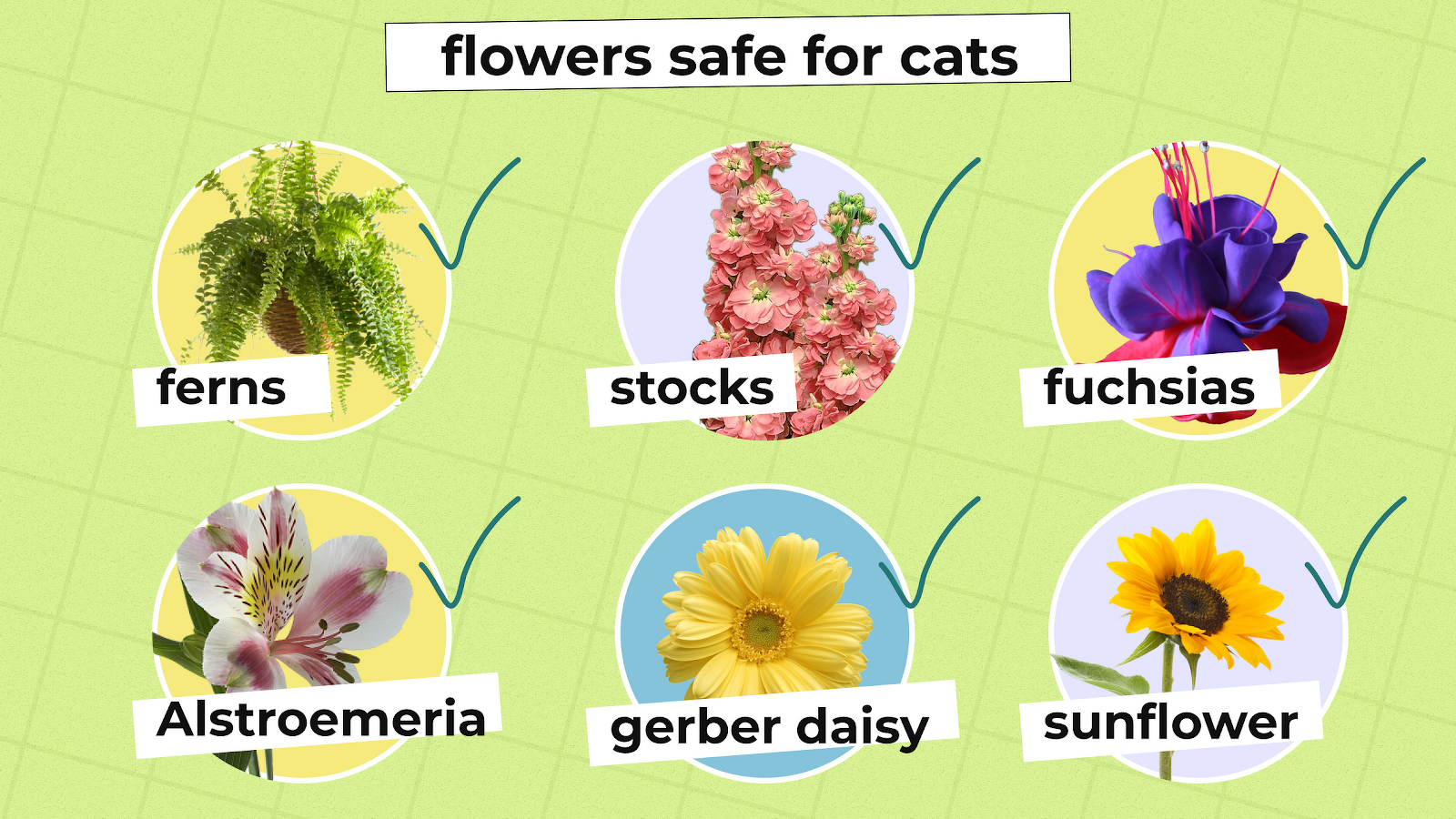
Common Plants, Poisonous For Cats
Sadly, countless stunning tropical plants, from the gorgeous Monstera deliciosa to the charming Dieffenbachia, contain poison that may account for troubling symptoms. Even the seemingly innocent horsetail falls into the category of dangerous indoor varieties. Explore several most common toxic plants for cats here:
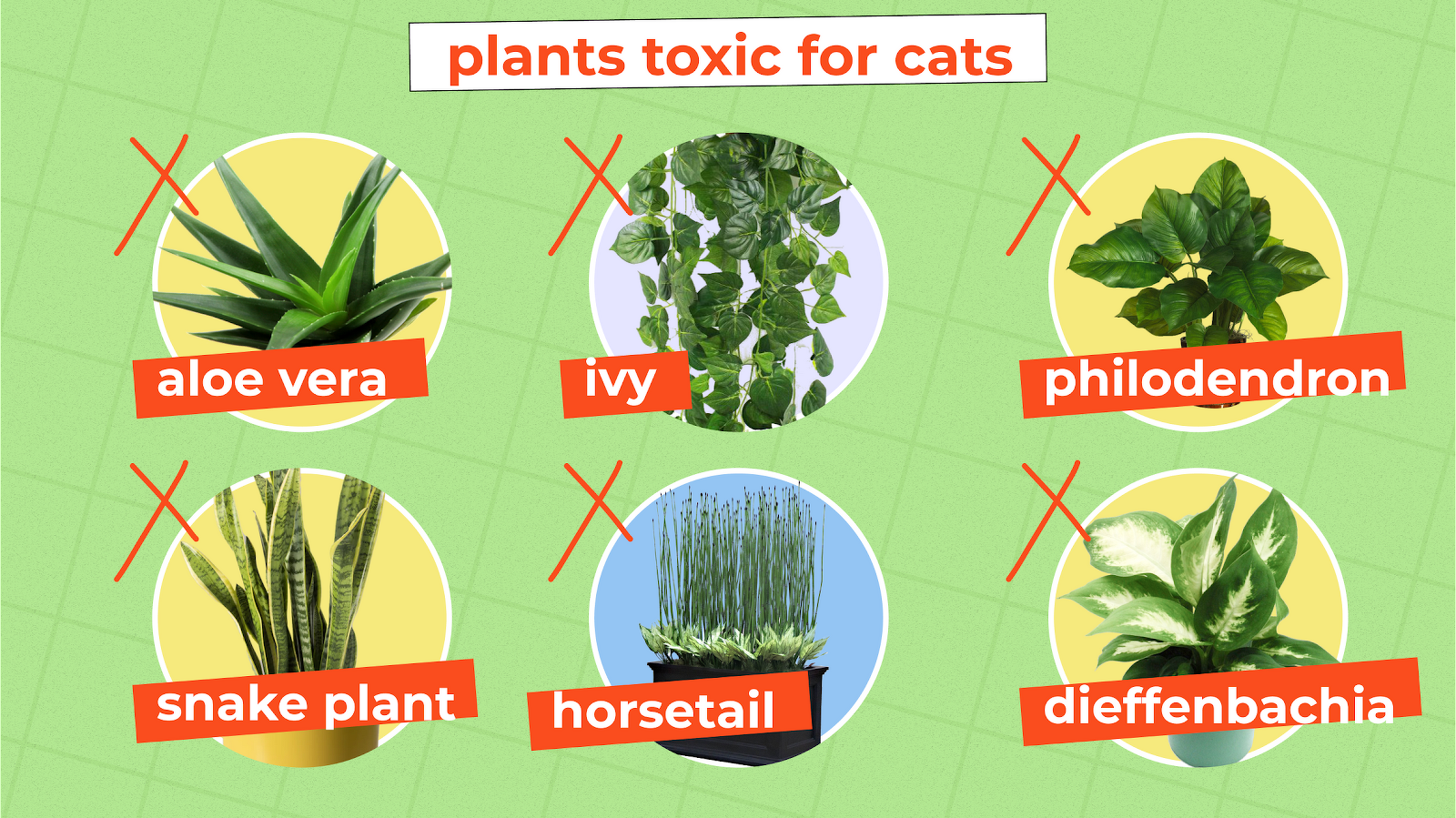
Safe Plants for Cats
Fortunately, numerous plants are safe to grow around cats: consider lisianthus, calathea, and the ever-famous Boston fern. Take a peek at the full list:

What to Do If Your Cat Ate a Toxic Plant

After swallowing a piece of a toxic indoor plant, your pet will require immediate attention to make an easy recovery. A crucial action is to memorise the name or species of the plant ingested, gathering as much relevant information as possible. Once done, immediately connect with the vet: either call for an online consultation or rush to the clinic. Remember: any action must be approved by a professional! It’s extremely easy to make things worse by attempting to induce vomiting or using any medication.
Symptoms to watch out for
Typically, the first intoxication signs include vomiting, diarrhoea, and uncontrolled saliva production. Additionally, note any changes in appetite and odd behaviour: it could be difficulty breathing or swallowing, inactivity, or drowsiness.
First aid
When it comes to cats and toxic plants, it’s best to seek professional help immediately. Inducing vomiting or giving fluids is dangerous in this situation, so focus on detecting early symptoms to ensure timely treatment. Remember: there’s nothing better than rushing to the nearest clinic.
Why does my cat eat plants?
There exist plenty of theories about cats’ infatuation with greenery. Firstly, considering that some weeds aid digestion and help regurgitate hairballs, some felines are instinctively drawn to them. In addition, many cats genuinely enjoy the taste and texture of specific indoor varieties, catnip being the most well-known example. Lastly, it might serve as a form of self-medication to soothe the nervous system and improve circulation. Unfortunately, our adorable pets can’t always tell the difference between delicious catnip and deadly carnations, so we have to stay on guard and prevent any nibbling on toxic greenery.
FAQ
Are Any Flowers Poisonous to Cats?
Yes, it’s sad to note how many species are toxic; for example, any flower related to lilies is particularly dangerous. Consuming them might result in acute kidney damage. Other flowers to watch out for include tulips, daffodils, chrysanthemums, and peonies.
What Flowers Do Cats Avoid?
Most cats tend to stay away from strong-scented flowers, such as lavender and geraniums. Also, they quickly learn to keep their distance from prickly houseplants like cacti and succulents.
Do Cats Know Not to Eat Poisonous Plants?
Felines do have an instinct to ignore certain varieties; however, they don’t necessarily differentiate between harmless and poisonous plants. For cats, chewing the greenery is the simplest solution when exploring it, so take your time to create a safe environment.
Is Lavender Safe for Cats?
Lavender is generally harmless, but even so, it might account for regurgitation or diarrhoea when eaten in certain quantities. Not to mention, some felines may be allergic to lavender, so it’s vital to stay alert to their reaction.
Are Roses Safe for Cats?
These classic flowers are famous due to their beauty and non-toxicity for most household animals, including cats. However, keep an eye on those thorns!
Are Sunflowers OK for Cats?
Yes, sunflowers are absolutely safe, so you can have them around cats.
Is Mint OK for Cats?
Catnip and catmint are risk-free for our fluffy friends, but check that it isn’t garden mint: in large amounts, it leads to stomach issues.
Can Cats be In the Same Room with Lilies?
Technically, yes, as long as they don’t touch or ingest them. Nevertheless, keep in mind that pollen released by fresh lilies easily travels by air, and even slight exposure can result in severe allergies.
What Would Happen If My Cat Licked a Toxic Plant?
Depending on the level of toxicity, it could result in short-term diarrhoea or serious nausea. Typically, it passes quickly if the pet didn’t swallow anything, but it’s always better to ask the vet to be completely sure.
Is it OK to Have Toxic Plants And Cats?
Generally, having potentially harmful houseplants is not an issue as long as the pet can’t nibble on them. Storing greenery in a separate room is best, but bitter sprays or physical barriers might work as well.
How Can I Treat a Cat That Has Eaten a Poisonous Plant?
First and foremost, consult a vet for help! There isn’t much that can be done without a doctor, so remember the plant’s name or species and follow the professional’s advice immediately.
Are Bananas Toxic for Cats?
Good news: bananas are absolutely harmless to cats! Actually, the sweet taste and soft texture of ripe bananas might infatuate some felines, although many are often confused by them.
Are Hydrangeas Toxic for Cats?
Sadly, hydrangeas are considered poisonous, so it’s necessary to store these magnificent blooms in a secure and hard-to-reach place.
Is Eucalyptus Harmful for Cats?
While eucalyptus by itself is toxic only in large quantities, just the scent could become a hazard for the pet’s respiratory system. Avoid storing the plant or using its oils in rooms where your companions spend a lot of time.
Are Marigolds Toxic for Cats?
Marigolds are considered harmless, but some cats might be allergic or experience gastrointestinal distress.
Are Spider Plants Toxic for Cats?
Spider plants aren’t dangerous – this makes them a great addition to households with pets.
Is Rosemary Toxic for Cats?
In small amounts, rosemary is low-risk, but individual reactions can vary.



